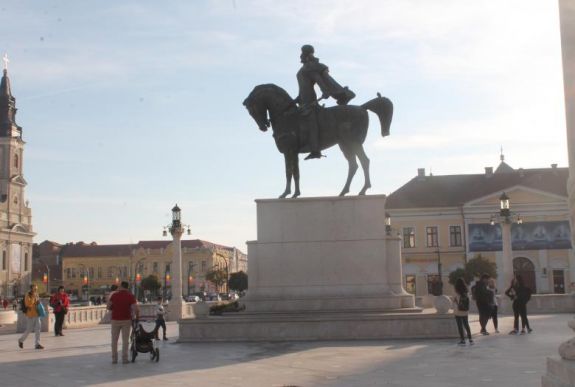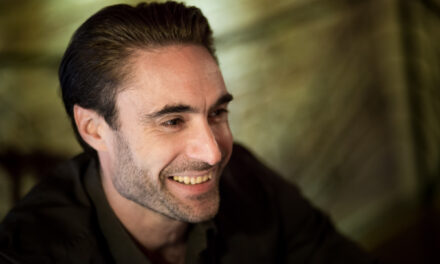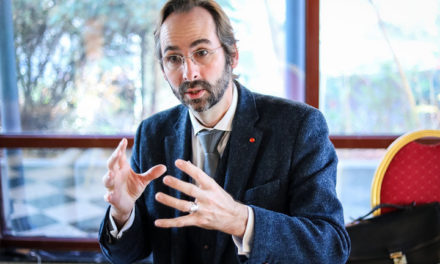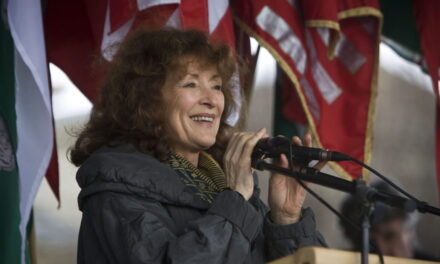Felix civitas, happy city, Paris on the Körös side or Pece side, the capital of Bihar, the gate to the west, Nagyvárad is alive and well, its Hungarians, reduced to a minority, are divided, but for now they are enjoying the modest results of the fragile cease-fire that recently took place.
Debrecen's sister city across the border, Nagyvárad, with a population of around 200,000, is home to the third largest urban Hungarian community of nearly fifty thousand people in Transylvania in the broader sense, i.e. together with Partium. The founding of the monastery of St. László, the newly built cathedral, the third farewell place in Europe thanks to the intercession of Sigismund of Luxemburg, the Reformed college testify to the richness of church life. The lack of a medieval town center is about the destruction of the Tartar invasion, the Turkish occupation, fires, the World War and Romanian national communism.
The city has also become a robust industrial center: in addition to the distillery and mill industry, it is a stronghold of beer production, its street lighting is more than 200, its electric lighting and trams are 112 years old, and it has been connected by rails to the country's railway network for 175 years. The cultural importance of Nagyvárad is also inestimable: the zero meridian was marked for a long time by the observatory of János Vitéz here, a printing press was established in the 17th century, in which an important Bible print was made, and in the shadow of the Art Nouveau palaces, the Holnap Társaság - led by Endré Ady and Gyula Juhász - experimented outside of Budapest , with an innovative approach.
Then came the First World War, the Romanian occupation, which was institutionalized as a nationalization, even though the city's population was still more than ninety percent Hungarian.
It was not until the 1970s that the proportion turned around with the panel occupation, which was primarily characteristic of the Ceaușescu era, and the artificial swelling of the population, mainly with Moldovan Romanians: at the time of the regime change, Hungarians made up only a third of the population, and according to the 2011 census, not even a quarter.
Perhaps precisely because it has lost its character as a front town, the relationship between Romanians and Hungarians is not characterized by everyday open tension - political scientist Zsolt Pászkán tells our paper. Unlike Marosvásárhell, for example, there were no pogrom-like clashes in Nagyvárad during the fall of the regime, and the years after the regime change were more characterized by small-scale, occasional looting of rights.
Hungarian signs can only be found in the city limits and in the scenes of the dreaded "Hungarian expansion", such as the OTP Bank branch or the Mol filling station, they have disappeared from the streets and street signs. The meticulous attitude with which the Romanian city leaders approached the statue of the city's founder, King Saint László, is telling: they did not allow the work to be erected in the main square -
the Romanian King Ferdinand was housed here in 2018, on the centenary of the "great unification". It is not inconceivable that the city administration did not want to have the king, who broke faith three times in the First World War and thus acquired Transylvania, compete with a holy knight-king from Árpád House.
That is why the statue of László was placed in the castle after a long tug-of-war and compromises - and of course not from the taxes of the Hungarian taxpayers in Romania, but from church resources, public donations and help from the motherland. To this, the new mayor, Florin Birta, who seems to be a more tolerant figure than his predecessor, Ilie Bolojan, could only add that Nagyvárad is a multicultural city, and this is an important tradition. How organically this developed is a poetic question. The author of these lines vividly remembers when he met a group from Nagyvárad during the 2019 farewell party in Csíksomlyo, led by Lajos Gellért from Moldova, the president of the Transylvanian Hungarian People's Party in Várad, who tearfully said: he will pray for the end of the loss of local Hungarians, and for that the Hungarians who moved out of the city should return to their narrower homeland, because so few can no longer bear this pressure.
In addition, Hungarians are also somewhat divided, and perhaps it is an indication of their diminishing, but still existing, power that the Romanians also add some shovels to this. Florin Birta raises the opposition of the RMDSZ, which is the city's second power, cautiously, even though his party, the National Liberal Party, is in a coalition with the largest Hungarian party. In return, he provided such "advantages" as being able to attend the St. László Days held ten years ago in June, and he even went to its opening.
Open tension is more the business of the Romanian press:
According to Zsolt Pászkán, he likes to magnify and sew stories around the necks of Hungarians, which can be well sold to sovén readers. This was the case, for example, when the price was raised at a Mol petrol station, which the Hungarian press presented as a price-raising diversion, even though the owner of the private station operating in the franchise system decided to raise the price.
And speaking of Ilie Bolojan, who ruled the Castle for twelve years and then moved to the county council: the political scientist reminds me of some of his actions reminiscent of the Hungarian-loving mayor of Cluj-Napoca, Gheorghe Funar. For example, the 20-year-old Várad magazine was discontinued due to budgetary constraints, and the Szigliget Theater, founded in 1900, was attempted to be merged with the Romanian Mária Királyné Theater.
This year's census is also problematic: Hungarian is only spoken at one local government enumeration point, and among those applying for enumeration commissioners, Hungarians were scattered.
And this, Pászkán points out, threatens with the danger - supported by examples - that in certain cases the Romanian interviewer puts pressure on the members of a family of mixed nationality to declare themselves uniformly Romanian, or simply does not take the question to nationality.
However, if the proportion of the Hungarian population drops below twenty percent, many rights - for example, the right to use the mother tongue, which is already only partially respected - will be further restricted.
Then later, great tolerance, street name signs and pats on the back for the remaining few thousand Hungarians will come: they won't go any further than the Saxons did with the Segesvár memorials or President Klaus Iohannis.
Source: mandiner.hu
Featured image: Maszol.ro/













